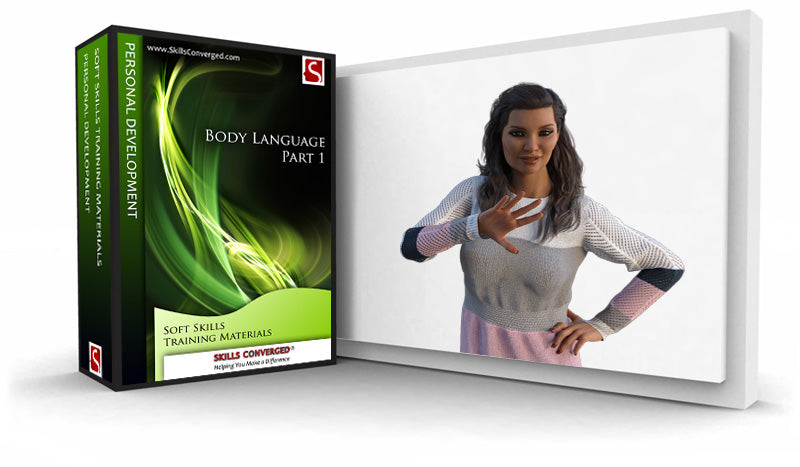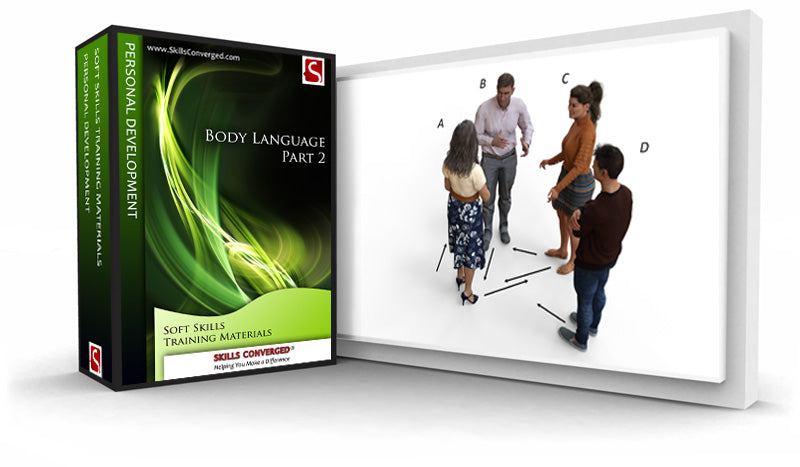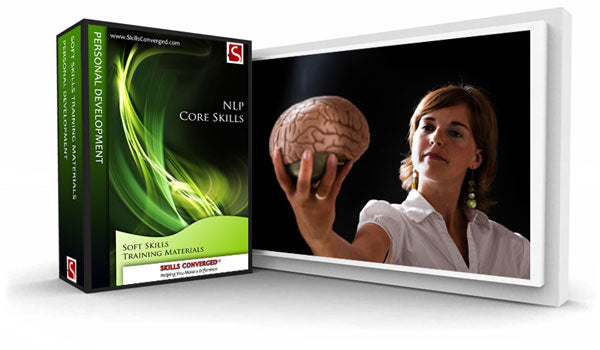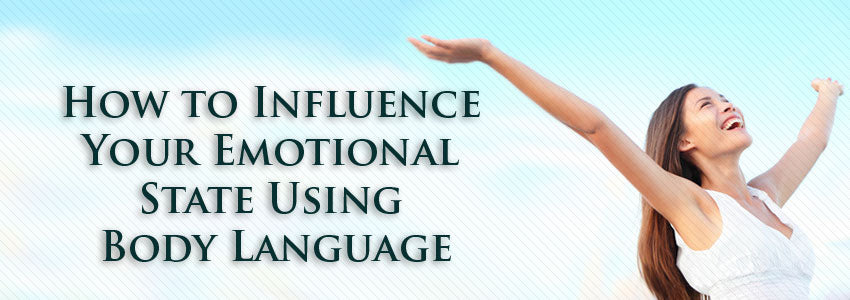
How to Influence Your Emotional State Using Body Language
So far you have seen that reading body language can help you understand others whilst also adjusting your own non-verbal signals will allow you to communicate better with others. Are there any other benefits to body language awareness?
It turns out that the relationship between your brain and body language is a two way street. Let’s see how this principle works with the following two cases.
Body Language of Smiling
It is well known that when you feel certain emotions such as happiness, a number of changes take place in your body such as changing heart rate, sweating, or the movement of your zygomatic major muscle leading to a smile.

What’s even more interesting is that the reverse is also true. When you change the state of certain facial muscles such as the zygomatic major, you start to feel the emotion associated with that expression; in this case happiness and joy. This is known as facial feedback hypothesis. One of the first people to suggest this was Charles Darwin indicating that a physiological change can have a direct impact on an emotion.
Testing the hypothesis however wasn’t easy as subjects had to adopt a particular expression without having the emotion and also not being able to guess what the experiment was all about. In 1988, a group of researchers carried out an ingenious study (Strack, et al. 1988). They told subjects that they were determining the difficulty people had when they used something without using their hands. The experiment was set up so that the subjects had to use their mouth to hold a pen in one of three ways:
- Lip position. The forced facial expression resulting in a frown.
- Teeth position. The forced facial expression resulting in a smile.
- Control group. Holding the pen in their non-dominant hand.
All groups were then instructed to fill in a questionnaire in that state, rating the difficulty of the move. The real test was however carried out at the end asking the subjects to rate the funniness of a cartoon shown to them. In this way, subjects did not have any specific emotional state prior to rating the cartoon and hence the experimenters could test the effect of the forced facial expressions while the subjects evaluated a cartoon. The results showed that the participants in the Teeth category reported a higher amusement rating than those in the Lip category. It seems that Darwin was right all along.
The conclusion is simple; keep smiling and the world will smile back at you. The smile will make you feel happy, it will make them feel happy and their smile will make you even happier.

Keep smiling and the world will smile back at you.
Body Language of Anger
Try the following exercise. Change your facial expression to one that shows anger or displeasure. You can do this by increasing the tension in the lower middle part of your forehead. The muscle, corrugator supercilii will pull your eyebrows down leading to a wrinkle in your forehead.

Avoid a furrowed brow; it will make you feel angry or too critical.
Now, how do you feel while you are reading this? When you make a furrowed brow, your brain picks up the signals from your muscles and thinks that since the muscles are in this particular state, then “I must be upset and displeased”. In other words, by adopting a particular physical state, you have affected your emotional state.
Many studies have attempted to measure this effect, reaching some amazing results. For example, in one study, subjects were asked to look at a series of pictures of famous people while furrowing their brow (Strack and Neumann, 2000). The results showed that when their brows’ were furrowed, participants tended to be less impressed with the celebrities and rated them as less famous as when they were not furrowing their brows. The study suggests that facial expressions can influence non-emotional feelings which in turn can become the basis of judgment.
This gets even more interesting when you consider what is known as passive facial feedback hypothesis demonstrated by various studies. The question is what will happen if we artificially create a particular gesture or facial expression? In one study, an elastic bandage was placed on the forehead of participants to create an artificial furrow. They were then asked to rate their impression of a number of neutral targets. The results showed that having an artificial furrow reduces a person’s interest in those targets in comparison with a person that did not have a furrow (Mori & Mori, 2010). In another similar study, researchers placed artificial tears in the eyes of participants to see if the artificial tears alone could lead to feeling sadness. The result was that 53.8% of participants reported sadness while only 28.6% reported cheerfulness (Mori & Mori, 2007).

These studies suggest that holding a particular facial expression or gesture works both ways, even when it is created artificially. If you feel anxious, stressed and angry you furrow your brow and if you furrow your brow you are likely to feel angry and less interested which may also influence your judgment. This is when awareness of your own body language can significantly help you improve your quality of life, decision making and interpersonal skills. As soon as you realise you have adopted a particular physical state associated with a negative emotion, try to relax and return to a more neutral state or you risk making decisions while you are in a potentially negative emotional state.
Body Language of Confidence
In a recent study, a number of participants were asked to hold one of two postures during an experiment; sit in a slumped position or sit straight (Brinol et. al 2009). While holding the specific posture, each group had to complete a mock job application. They had to include their strengths and weaknesses relating to the job and record it in the application form. Participants then had to rate themselves whether they were good candidates for the job. The results showed that those who had a slumped posture were less confident in themselves. They also scored themselves as less suitable for the job they were applying for. This is yet another conformation of other studies mentioned above; your body can strongly influence your feelings, attitudes and subsequently your actions.
Everyday Applications of Using Your Body to Influence Your Mind
- You are doing yoga and feel the intensity of the moves in your hands, your body and your face. As a result, you automatically furrow your brow. Relax your facial muscles. Take a deep breath and return to a neutral state while stretching those critical leg muscles.
- You are about to enter a meeting. Just before entering through the door, smile. Keep the smile until you start to feel relaxed, energetic and proud to be here at this moment and in this location. Monitor your body language and enter the meeting room when you are feeling relaxed. You will feel and appear much more confident and you will notice this in people’s response to you.
- You are behind your computer. The font is small and hard to read. You squint and in the process activate corrugator supercilii. You continue to read in this state. Before long, you start to feel anxious. Your anxiety leads you to make a user error while using the computer. In turn, this leads to more computer problems. At this point you may start to blame your poor performance on the buggy, under-performing computer and continue blaming everyone and everything for your poor experience today. Remember, it all started with a squint. Detect your squint straight away, and address it. Relax those eye muscles and get back to productive work with a happy smile and a confident facial expression.
- You had a difficult day and feel tired. On your way home, you get stuck in a horrendous traffic. Your day has just got worst. What happens if you enter the house with a facial expression of looking stressed, unhappy and angry? Not only you are likely to remain in that state, but you are also likely to change the house’s mood, increasing the likelihood of further problems. Your day will become even more miserable. Instead, just before entering the house, relax your facial expressions and smile. You don’t have to feel happy straight away. All you want to achieve at this point is to adopt a happy facial expression; unfurrow your brows, relax your cheeks, hold your chin high, smile and be ready to make a nice-to-see-you eye contact. The rest will follow automatically. The side benefit is that your family will also see a happy face returning home and will subsequently feel better and happier. All problems are forgotten or will be seen as less significant.
- On a bright sunny day you are forced to squint which activates the same signals as of corrugator supercilii leading you to feel sad or upset. This is why sunglasses are such great tools, reversing the effect and thereby making you feel calmer while also making you look cool; two for the price of one.
- Focus on your breathing and make it steady and relaxed. Breathe through your chest while relaxing your belly and throat. The physical change will make you feel emotionally relaxed and calm, ready to face the challenges of the day.
References
Briñol, P., Petty, R.E., & Wagner, B. (2009) “Body posture effects on self-evaluation: A self-validation approach”, European Journal of Social Psychology, 39, 1053-1064.
Mori, H., & Mori, K. (2007) “A test of the passive facial feedback hypothesis: we feel sorry because we cry”, Perceptual and Motor Skills, 105, 1242-1244.
Mori, K. & Mori, H. (2010) “Examination of the passive facial feedback hypothesis using an implicit measure: With a furrowed brow, neutral objects with pleasant primes look less appealing”, Perceptual and Motor Skills, 111, 785-789.
Strack, F., Martin, L.L., & Stepper, S. (1988) “Inhibiting and facilitating conditions of the human smile: a nonobtrusive test of the facial feedback hypothesis”, Journal of Personality and Social Psychology, 54, 768-777.
Strack, F., Neumann, R. (2000) “Furrowing the brow may undermine perceived fame: the role of facial feedback in judgments of celebrity”, Personality and Social Psychology Bulletin, 26, 762-768.
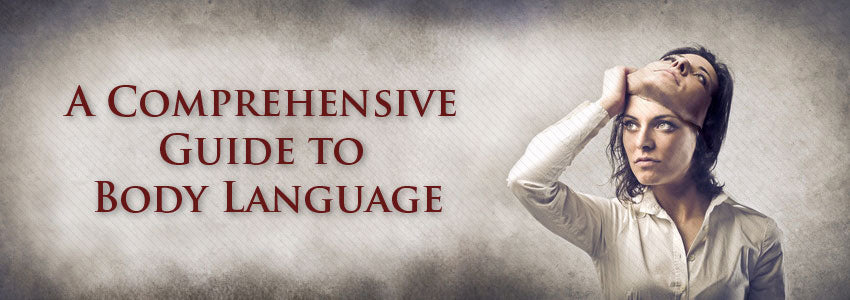
All Articles in the Series
A Comprehensive Guide to Body Language
Origins of Humans and Body Language
How to Read People Using Their Body Language
How to Influence Your Emotional State Using Body Language
Body Language Across Different Cultures
Body Language of Defensive Attitude
Body Language of Good First Impressions
How to Improve Personal Impact
Continue Reading the Body Language Series..
Body Language Guide Article IndexBody Language Training Materials
Body Language Exercises
Explore our collection of free body language training exercises and articles:



Use this body language exercise at the beginning of a session before covering non-verbal communication. The aim is to find out how much delegates already know about this topic and...
The aim of this exercise is to get the delegates think about body language and gestures and observe how such signals can be instrumental while communicating. The training exercise illustrates...
This is an exercise in communication with the aim to increase awareness of body language and non-verbal communications.





